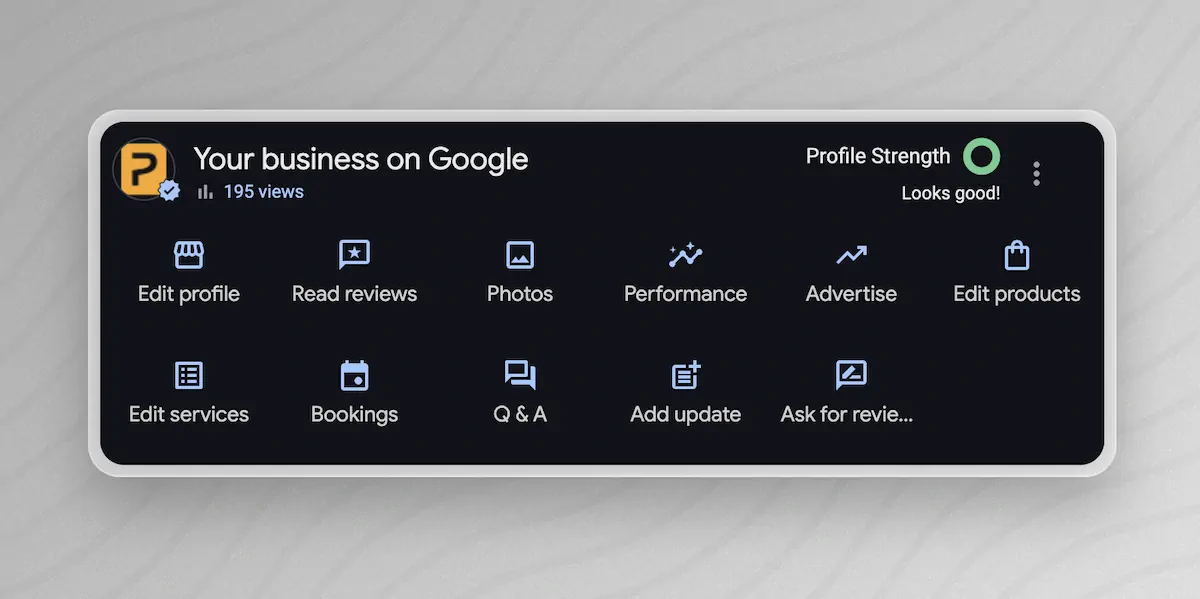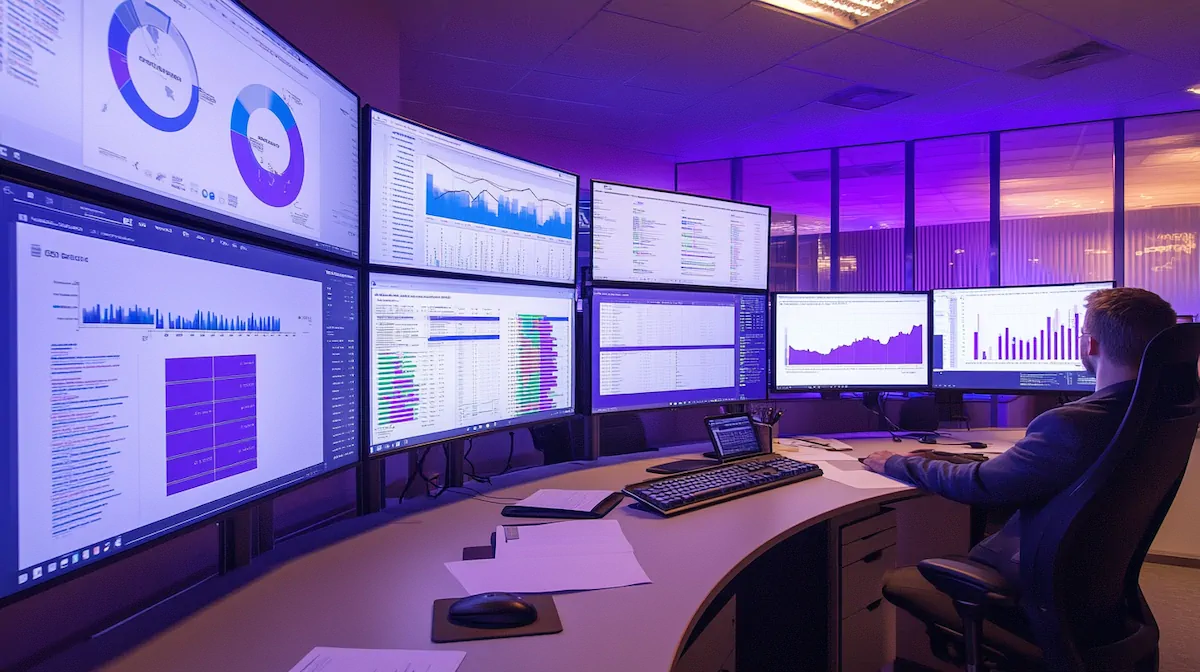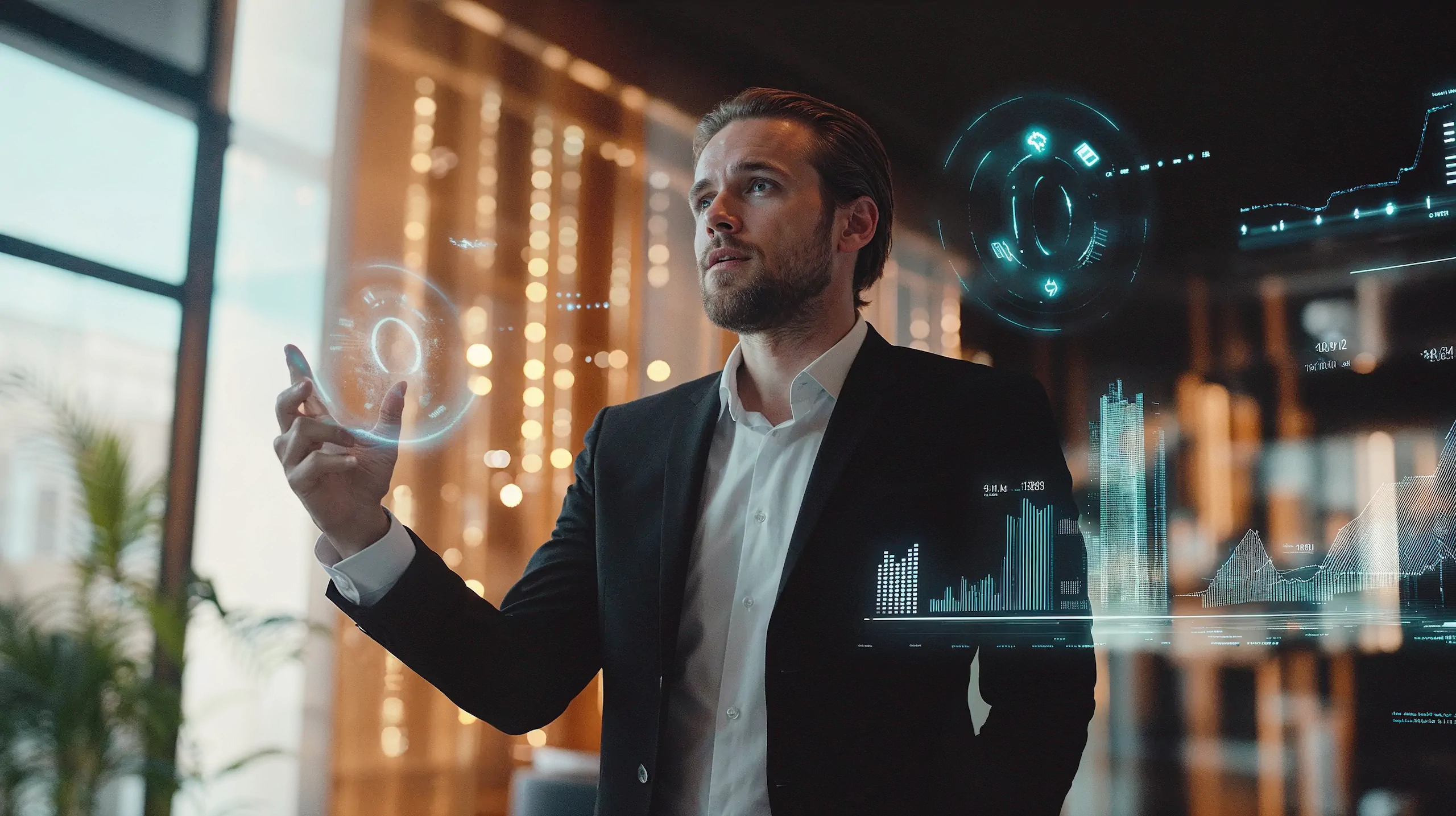Local SEO Checklist 2025: The Ultimate Guide to Dominating Local Search

13 min read
Understanding the Local Search Landscape

Local SEO is evolving, and in 2025, businesses must focus on optimizing their online presence to stay competitive. Search engines prioritize businesses with accurate information, strong engagement, and well-optimized websites. Whether you're a local service provider, a retail store, or a restaurant, mastering local SEO can help you attract more customers and increase revenue.
What Does a Local SEO Strategy Entail?
A solid local SEO strategy includes optimizing your Google Business Profile (GBP), website, online reviews, and local backlinks. It also involves engaging with the community and leveraging advanced tactics like voice search optimization and AI-driven personalization.
Mastering Your Google Business Profile

Step 1: Claiming and Verifying Your Google Business Profile Listing
- Go to Google Business Profile and sign in.
- Search for your business and claim ownership.
- Verify your listing via postcard, phone, or email. Verification by postcard can take up to 14 days, while phone and email verification are typically quicker.
- Once verified, expect it to take a few days for your business information to appear publicly on Google Search and Maps.
- During this period, monitor your account for any additional verification steps Google may require.
Step 2: Optimizing Your Google Business Profile
Complete Your Business Information
- Ensure your Name, Address, and Phone Number (NAP) are consistent across all listings.
- Select the correct business category.
- Add business hours and special hours.
Add Attributes and Services
- Highlight unique offerings like "women-owned" or "outdoor seating."
Upload Photos and Videos
- Include high-quality images of your location, products, and team.
- Add short videos showcasing services.
Manage Reviews
- Respond to both positive and negative reviews to build credibility.
- Encourage satisfied customers to leave feedback.
Make Google Posts
- Share promotions, events, and updates directly on GBP.
Optimize for Keywords
- Use location-specific keywords in your description and posts.
Complete the Q&A Section
- Answer common customer questions in advance.
Monitor Insights
- Track performance metrics to understand customer behavior.
Website Optimization for Local Search

On-Page SEO
Optimizing on-page SEO is essential for improving local search rankings and ensuring your website is discoverable by potential customers. By fine-tuning elements like title tags, meta descriptions, and structured content, businesses can provide search engines with clear signals about their offerings while enhancing user experience. Implementing these tactics will help establish relevance, authority, and trust, ultimately driving more local traffic to your site.
Title Tags and Meta Descriptions
- Use local keywords in titles and meta descriptions.
- Example: "Best Coffee Shop in Los Angeles - Freshly Brewed Daily."
- Keep meta descriptions under 160 characters for better readability.
- Use power words like Best, Ultimate, and Top to increase click-through rates.
Header Tags
- Structure content with H1, H2, H3 for better readability.
- Use H1 for the main title, H2 for subheadings, and H3-H4 for further breakdowns.
Website Content
- Create high-quality, locally relevant blog posts.
- Example: "Top 10 Places to Visit in [Your City] After Grabbing Coffee."
- Ensure content is at least 1,000 words long to rank better on Google.
- Include FAQs to answer common customer questions and improve rankings.
Location Pages
- Build dedicated landing pages for each service area.
- Include unique testimonials and case studies for each location.
- Add an embedded Google Map to improve local search visibility.
Technical SEO
In today's digital world, having a well-optimized website is essential for staying competitive in local search rankings. Technical SEO ensures that search engines can effectively crawl, index, and understand your website, directly impacting your online visibility and user experience. By addressing key technical factors, you can improve site speed, security, and structure, ultimately making your business more discoverable by potential customers.
- Ensure mobile-friendliness by using responsive design and testing your site on various devices.
- Improve website speed by optimizing images, enabling browser caching, and using a content delivery network (CDN).
- Implement structured data markup for better search visibility, helping search engines understand your content.
- Enhance security with HTTPS to build trust and improve rankings.
- Optimize for Core Web Vitals to improve user experience and search engine performance.
- Use XML sitemaps and robots.txt to guide search engines in indexing your site effectively.
- Fix broken links and avoid duplicate content to maintain a high-quality website structure.
Building a Strong Local Presence

The Importance of Citations and Backlinks
Building a strong local presence starts with credibility, and citations and backlinks play a crucial role in this. Citations ensure your business is consistently listed across trusted online directories, reinforcing your legitimacy to search engines. Backlinks from reputable sources further validate your website's authority and relevance.
- Get listed on high-authority directories like Yelp, Yellow Pages, and BBB.
- Earn local backlinks from blogs, newspapers, and local businesses.
- Regularly audit your citations to correct inconsistencies that may impact your rankings.
- Seek partnerships with local businesses for guest blog opportunities and cross-promotions.
- Monitor your backlink profile to remove toxic or spammy links that could harm your SEO efforts.
Recommended Local Directories and Resources
- Google Business Profile
- Apple Maps
- Bing Places
- Facebook Business
- Yelp for Business
- Yellow Pages
- Better Business Bureau (BBB)
- Industry-specific directories (e.g., Angie's List for contractors, Zocdoc for healthcare providers)
Engaging with the Local Community
Creating strong relationships with your local audience is key to boosting your visibility and reputation. Actively engaging with your community not only enhances brand awareness but also fosters trust and loyalty. Here are a few ways to get involved:
- Sponsor local events to gain exposure and demonstrate your commitment to the community.
- Collaborate with other businesses to expand your network and create mutually beneficial opportunities.
- Get involved in local social media groups to interact with potential customers and stay updated on regional trends.
- Partner with schools, charities, or community organizations to increase positive brand association.
- Host free workshops or networking events to establish your expertise and strengthen local connections.
Advanced Local SEO Tactics

As competition in local search grows, businesses need to implement advanced strategies to stay ahead. These tactics should be used when basic optimization efforts are not enough to secure top rankings or when competing businesses are aggressively optimizing their online presence. Advanced local SEO techniques can help businesses build credibility, gain visibility in niche markets, and ensure long-term success.
1. Competitor Analysis
- Analyze competitors' backlinks, keywords, and GBP strategies.
- Use SEO tools like Ahrefs, SEMrush, or Moz to identify top-performing competitors.
- Monitor their social media engagement and content strategies.
- Identify local citations they are listed on and aim to get listed on the same.
- Study their Google Business Profile posts and customer reviews for insights.
- Track their website updates and any changes in their search rankings.
2. Reputation Management
- Monitor brand mentions and respond to reviews.
- Set up Google Alerts to track mentions of your business online.
- Encourage happy customers to leave positive reviews on Google, Yelp, and other relevant platforms.
- Address negative reviews professionally and offer solutions where possible.
- Regularly update and optimize your Google Business Profile with fresh content.
- Engage with customers on social media by responding to comments and direct messages.
- Create a testimonial page on your website to showcase positive customer feedback.
- Use online reputation management tools like Trustpilot or Birdeye to streamline monitoring and responses.
3. Hyperlocal SEO
- Optimize for neighborhood-level searches.
- Create neighborhood-specific landing pages on your website.
- Use localized content and keywords that target specific districts or communities.
- Get involved with local events and sponsorships to increase brand visibility.
- Utilize geotagging for images and social media posts.
- Encourage customers to mention their location when leaving reviews.
- Optimize for "near me" searches by including precise location data in metadata and content.
The Future of Local SEO

Voice Search Optimization
- Optimize for conversational queries like "best pizza near me."
AI and Personalization
- Implement AI chatbots for customer support.
Augmented Reality (AR) Applications
- Use AR to enhance online shopping experiences.
The Metaverse and Virtual Storefronts
- Prepare for the rise of virtual business interactions.
Zero-Click Searches
- Optimize featured snippets and knowledge panels.
The Future of SEO in an AI-Driven World
The future of SEO in an AI-driven world is characterized by increased efficiency, personalization, and a focus on user intent. AI is transforming SEO strategies, making them more sophisticated and user-centric.
Key Trends
Enhanced Search Algorithms
AI-powered algorithms like Google's RankBrain are improving search accuracy and personalization, leading to a more complex SEO landscape. These algorithms use machine learning to better understand user intent and provide more relevant search results.
Semantic Search
Search has evolved from basic keyword matching to semantic search, considering user behavior and the meaning behind words or phrases. This shift requires SEO professionals to focus on creating content that addresses the nuanced intent behind search queries.
Automation and Efficiency
AI tools are automating various SEO tasks, including keyword research, content optimization, and technical audits. This automation allows SEO professionals to focus on strategy and creative tasks, leading to more comprehensive and effective campaigns.
Personalization and User Intent
AI will play a crucial role in understanding and catering to individual user intents, enabling the creation of personalized content and search experiences. This focus on user intent and personalization will lead to improved rankings and increased website traffic.
Adapting SEO Strategies
To thrive in this AI-driven future, SEO strategies must evolve:
- Embrace AI tools while balancing human expertise.
- Focus on creating high-quality, conversational content optimized for voice search and natural language queries.
- Prioritize user experience and intent over traditional keyword-focused approaches.
- Leverage AI for data analysis and insights to make informed decisions.
- Optimize for visual search as AI improves image analysis capabilities.
By adapting to these changes, businesses can ensure they remain competitive in the evolving digital landscape and continue to deliver engaging experiences for their users.
The Precision-SEO Approach: A Hyper-Focused Strategy
The digital landscape is more competitive than ever, and businesses need a hyper-focused approach to maximize their search visibility. The Precision-SEO Approach is designed to help businesses refine their strategies and achieve better rankings by leveraging niche targeting, structured data, and emerging technologies. By honing in on specific local audiences and their unique needs, businesses can gain an edge over competitors and drive more qualified traffic.
Below are the key elements that make this strategy effective:
- Target highly specific, long-tail keywords that align with niche search intent and have lower competition.
- Focus on user intent and localized content, ensuring relevance to specific communities and their unique needs.
- Optimize metadata and structured data to enhance visibility in rich search results.
- Create highly detailed, in-depth content tailored to hyperlocal audiences, incorporating region-specific keywords and cultural nuances.
- Leverage customer reviews and testimonials in content to build credibility and trust.
- Utilize schema markup to help search engines understand and categorize your content effectively.
- Establish strong internal linking structures to guide users through a seamless site experience while boosting SEO.
- Experiment with emerging technologies, such as AI-driven personalization, to tailor content recommendations based on user behavior and preferences.
Take Your Local SEO to the Next Level
Local SEO is no longer just an option—it's a necessity for businesses that want to thrive in 2025 and beyond. By implementing these strategies, you can increase your visibility, attract more local customers, and establish yourself as a trusted presence in your community. The digital landscape is constantly evolving, so staying proactive and refining your local SEO efforts will keep you ahead of the competition. Start today, monitor your progress, and adapt to new trends to ensure your business continues to grow and succeed.
If you're looking to go even deeper into your digital strategy, explore our insights on digital marketing trends that can complement your local SEO efforts.
Additionally, optimizing your website is key to SEO success. Check out our guide on website optimization strategies to ensure your site is performing at its best.
For businesses focusing on automation, our article on marketing automation can help you streamline processes and improve your local marketing efficiency.
Finally, understanding analytics is crucial in measuring SEO success. Learn more in our business growth analytics guide to make data-driven decisions and refine your strategies over time. By implementing these strategies, you can increase your visibility, attract more local customers, and establish yourself as a trusted presence in your community. The digital landscape is constantly evolving, so staying proactive and refining your local SEO efforts will keep you ahead of the competition. Start today, monitor your progress, and adapt to new trends to ensure your business continues to grow and succeed.
FAQs About Local SEO Checklist 2025
What is Local SEO?
Local SEO is the practice of optimizing your online presence to attract customers in your geographic area.
How Long Does Local SEO Take to Show Results?
You may start seeing improvements in 3-6 months, depending on competition and effort.
Can I Do Local SEO Myself?
Yes! While professional help speeds up the process, small businesses can manage local SEO with dedication.
What Are the Top Local SEO Ranking Factors?
- Google Business Profile optimization
- NAP consistency
- Local backlinks
- Reviews and engagement
FAQs About Post Oak Agency
What Services Does Post Oak Agency Offer?
We specialize in branding, marketing strategy, web design, and SEO for service-based businesses in Los Angeles.
How Can Post Oak Agency Help With Local SEO?
We optimize Google Business Profiles, websites, and citations to boost your local rankings.
Does Post Oak Agency Work With Small Businesses?
Yes! We love helping local businesses grow their online presence and attract more customers.
How Do I Get Started With Post Oak Agency?
Contact us for a free consultation to see how we can help you dominate local search in 2025!





